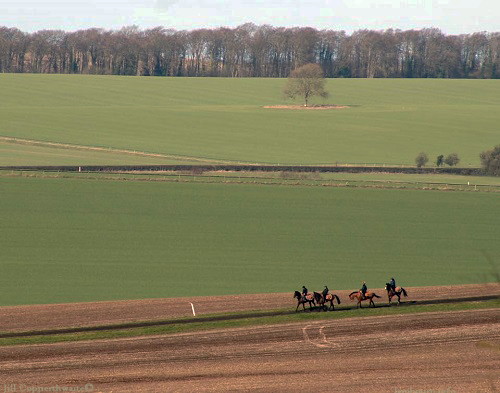Equine influenza – do your bit

Faringdon Gallops in Autumn (photo Jill Copperthwaite)
11 February 2019
With another four cases of equine flu notified it is even more critical to keep the biosecurity measures in place to prevent any potential outbreaks in Lambourn. Please be very vigilant, the cancellation of race meetings is already devastating, an outbreak in Lambourn would be a disaster.
Friday 8 Feb 2019
All race meetings in Britain have been cancelled until next Wednesday at the earliest while the sport’s governing body awaits test results from more than 100 stables that could have been exposed to equine influenza. Equine influenza, which has an incubation period of 72 hours, causes similar symptoms in horses to those suffered by humans; including fever, nasal discharge and a harsh, dry cough. It is rarely fatal, though it can lead to complications including pneumonia and some horses can take several weeks, or even months, to recover fully from an infection.
Lambourn is at the centre of horse racing and an outbreak would be catastrophic. Yards will be most vigilant and if you own a horse privately please be very respectful and avoid any contact with other horses.
The influenza virus is spread most readily with nose-to-nose contact and generally doesn’t live more than a few hours outside the horse, but it can be transmitted on objects that are used on or touched by other horses. Don’t share grooming tools/cloths/water buckets or other equipment among horses.
It is easy to transmit this disease, yet it’s also easy to kill the influenza virus if you take steps to disinfect things between horses. Soap and water will kill this virus, as will laundry detergent, bleach, Lysol, etc. It generally doesn’t last long in the environment, but it can last longer than people originally thought. Research has shown that in some circumstances (shielded from heat and direct sunlight), it might last a few weeks. If a sick horse was coughing into hay or bedding, then another horse came along the next day or so and nosed around in that same hay or bedding, there might be some risk of transmission.
If everyone is vigilant and observes biosecurity measures than we can protect Lambourn and our thriving racing industry.




